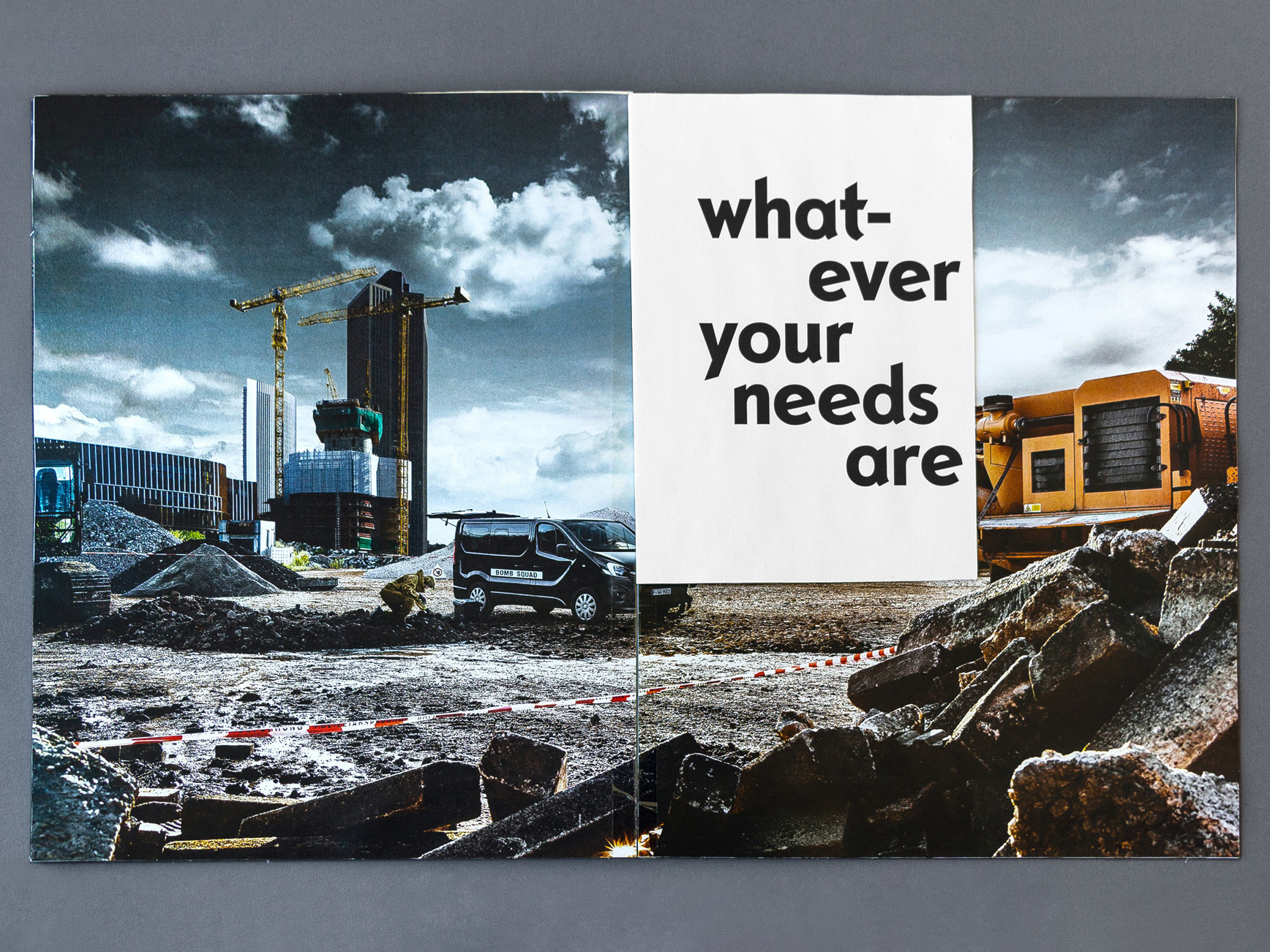Both the title and cover image spread across the front and back covers.
Both the title and cover image spread across the front and back covers.
This project ('Cuba is dead, long live Cuba! 2015, Change in Instalments') is an analysis of the situation in which my homeland finds itself in 2015. Cuba is not only a beautiful island in the Caribbean, it is also one of the last socialist countries in the world. In recent years, the government has introduced new regulations. At the moment, Cuba is changing almost on a daily basis, after having stood still for so long. Through a book, I try to explain and present daily life in Havana, the Cuban reality from different perspectives. I show the Cuba of the Cubans.
The book contains various texts written by me: an editorial, a text on Cuban history, a text on different aspects of daily life in Havana, 22 interviews with very different "types" of people, 22 surveys, a lexicon of Cuban terms, two lists of goods (as an introduction to the meaning of the two-currency system) and – of course – an index of images and a bibliography. There is also a selection of around 160 photographs to provide a visual context for the information.
The design concept of the book is based on the spirit of Havana: loud, colourful, chaotic, not clean, (almost) everything is half broken and used hundreds of times, the mixed complexion of its people and its architecture, ...
Visually, I translated this into the use of five different coloured papers, randomly mixed – which also makes each book unique – and the seemingly chaotic combination of four different typographies at once, three of them by Cuban designers. On the other hand, the edges have been cut rather roughly, giving the books a worn, almost broken look, like many things in Havana.
Until now, Cuba has been pretty closed off from the world. Now it is opening up. Nobody knows exactly how its political situation will develop, but it is certain that there can be no turning back. The book is initially sealed by its cover, as Cuba has been until now. Once the cover is broken to open it, there is no going back.
This work has been nominated for the German Design Award 2018.
The German design magazines 'Novum' (issue 09.2016) and 'Page' (issue 07.2016) wrote articles about this work.
From the content of the project, especially the photos and surveys, I developed two exhibitions in March-April 2016 in galleries in Leipzig and Halle.
At the beginning of 2016, the book was selected for the exhibition "Words are my reality" at the Burg Galerie in Halle.
a selection of ca. 160 photos provides visual context to the information.
The mixture of different typefaces aims to reflect Cuba’s character: a modern, clear but characterful sans serif – the ›Hatillo‹ by Daniel Díaz Milán –; two serif types: the one with an old-fashioned charm from the nineties – the ›Danzón‹ by Daniel Cruz –, and a quite funny, friendly and striking one – the ›Bufón‹ also by Daniel Díaz Milán –; and last but not least, a condensed grotesque that resembles the typefaces of the political propaganda in Cuba – the only not-Cuban typeface in the book, the ›Knockout‹ by Hoefler & Co –.
Example of the inside pages - text about the history of Cuba, for which I used images from various archives, including Life Magazine. Typography: 'Hatillo' by Daniel Díaz Milán.
Example of the inside pages: text about the current daily life in Havana.
five different color papers are mixed randomly, making out of every book a unique exemplar.
a selection of ca. 160 photos provides visual context to the information.
sample of the interior pages – photo chapters, where also the interviews are »hidden« in small booklets printed on 70 g/m2 paper. This way one can discover them by flipping through, however they are not to be seen from outside, just like the private lives of the natives are not accessible for outsiders.
Format of the book: 165 × 230 mm | Format of the interviews: 105 × 148 mm.
A selection of ca. 160 photos provides visual context to the information.
The German design magazine ›Novum‹ (issue 09.16) wrote an article about this work.
A whole-page article at the Novum!
The German design magazine ›Page‹ (issue 07.16) also wrote an article about this work.











